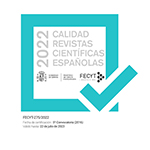Comportamientos tradutológicos, feminismos y literatura infantojuvenil: algunas calas en el ámbito gallego
Resumen
Este artículo analiza el campo literario infantojuvenil gallego a partir de las huellas que los feminismos y las traducciones dejaron en él. A partir del establecimiento previo de una serie de períodos en lo referente al impacto de los feminismos en las obras para la infancia y la juventud, se intentará ver si las obras feministas de otros sistemas literarios precedieron y fueron modelo de las gallegas en el marco de la literatura infantil y juvenil, si las autoras comprometidas con los feminismos en Galicia fueron también traductoras de textos coeducativos y si en la actualidad el campo literario gallego cuenta con las obras referenciales en el abordaje de cuestiones como las masculinidades alternativas, las identidades sexuales no normativas o los personajes *trans. Gracias al análisis de casos concretos, se comprobará que el campo literario gallego tardó en importar obras feministas para el lectorado en formación, que las obras gallegas supieron ser innovadoras con respecto a los feminismos –aunque en algunas de ellas se perciba la influencia de ciertos modelos– y que, en el tiempo en el que se necesitaban traducciones por la entrada del gallego en la enseñanza, se privilegiaron textos de las tradiciones vecinas y los clásicos de la literatura infantil. Además, se incidirá en que, en los últimos años, la traducción de autoras es algo muy habitual, mientras que también se cuenta con algunos textos feministas interesantes, pero esto ocurre sin ningún tipo de planificación previa que garantice una calidad y los mecanismos de diversidad cultural que un sistema literario con las particularidades del gallego necesita.
Descargas
Descarga artículo
Licencia
La revista Madrygal. Revista de Estudios Gallegos, para fomentar el intercambio global del conocimiento, facilita el acceso sin restricciones a sus contenidos desde el momento de su publicación en la presente edición electrónica, y por eso es una revista de acceso abierto. Los originales publicados en esta revista son propiedad de la Universidad Complutense de Madrid y es obligatorio citar su procedencia en cualquier reproducción total o parcial. Todos los contenidos se distribuyen bajo una licencia de uso y distribución Creative Commons Reconocimiento 4.0 (CC BY 4.0). Esta circunstancia ha de hacerse constar expresamente de esta forma cuando sea necesario. Puede consultar la versión informativa y el texto legal de la licencia.








